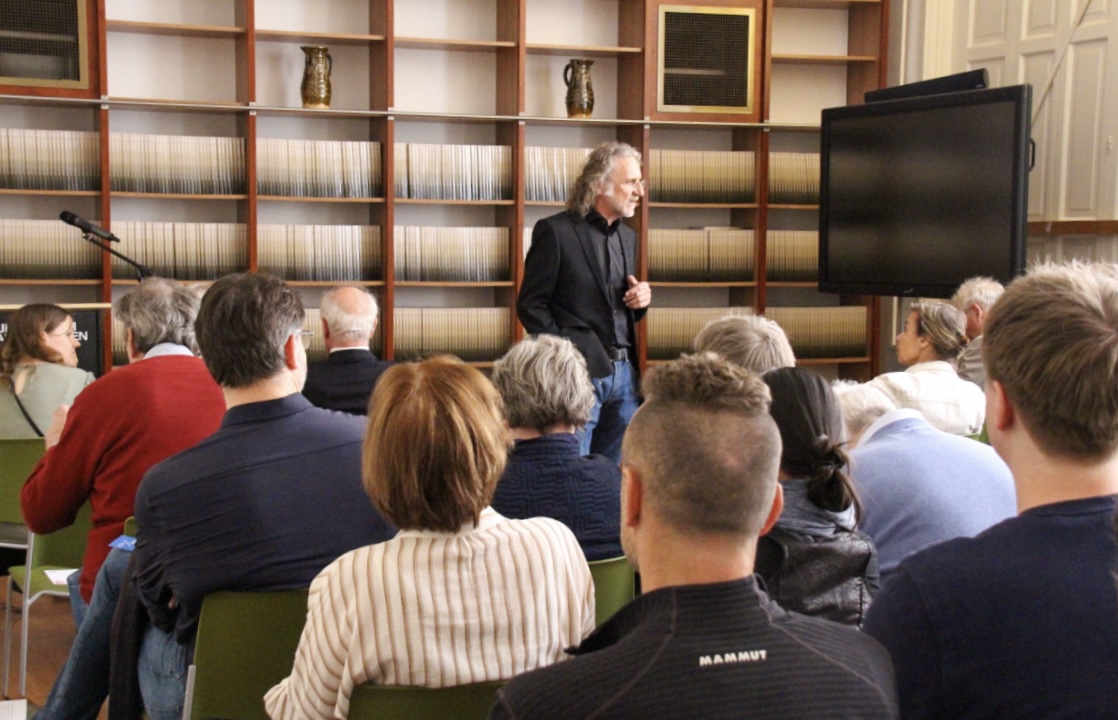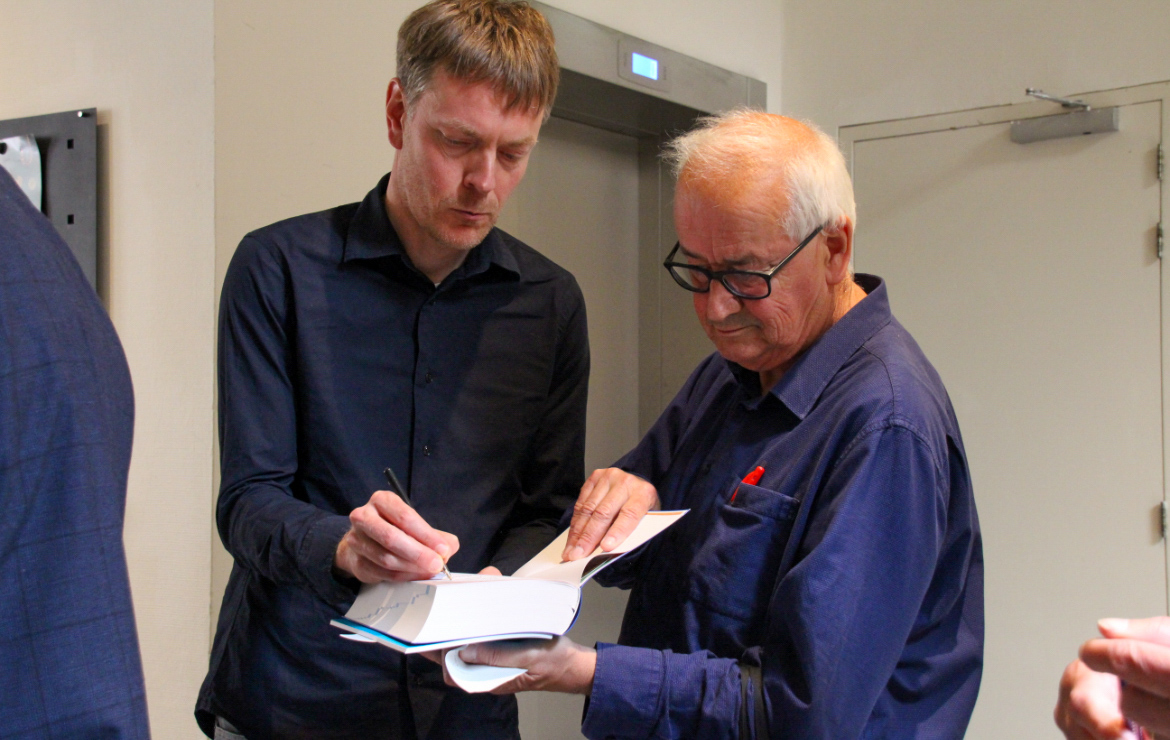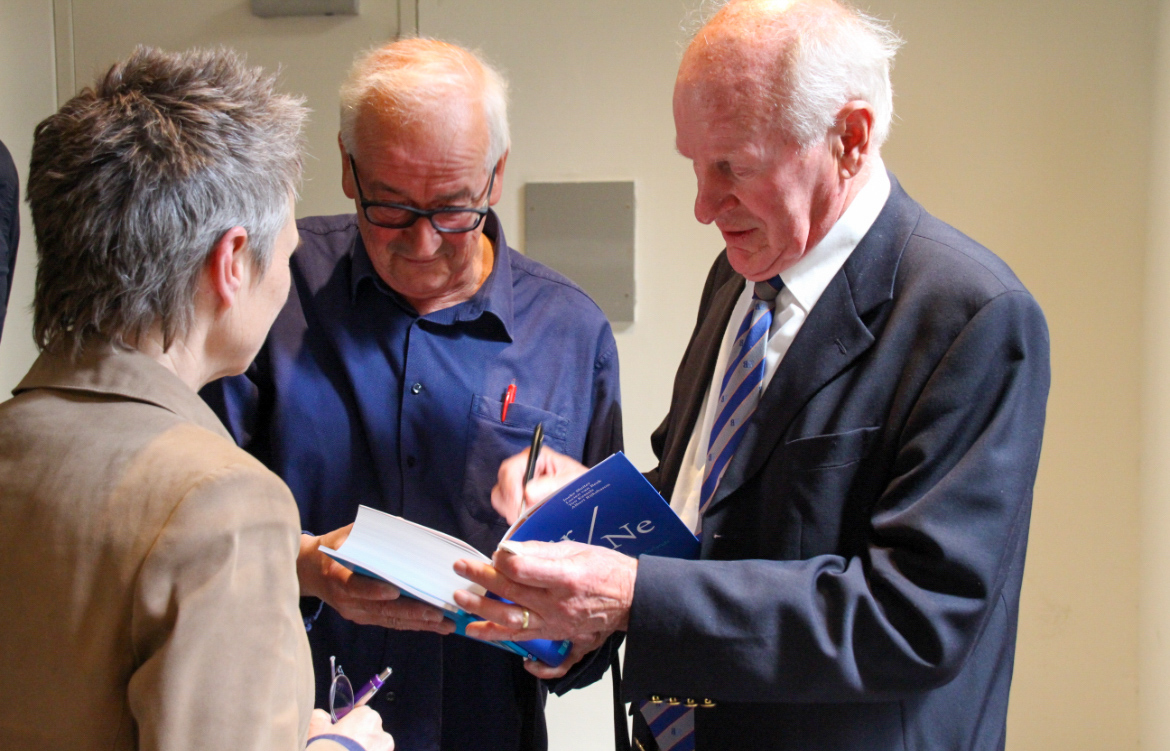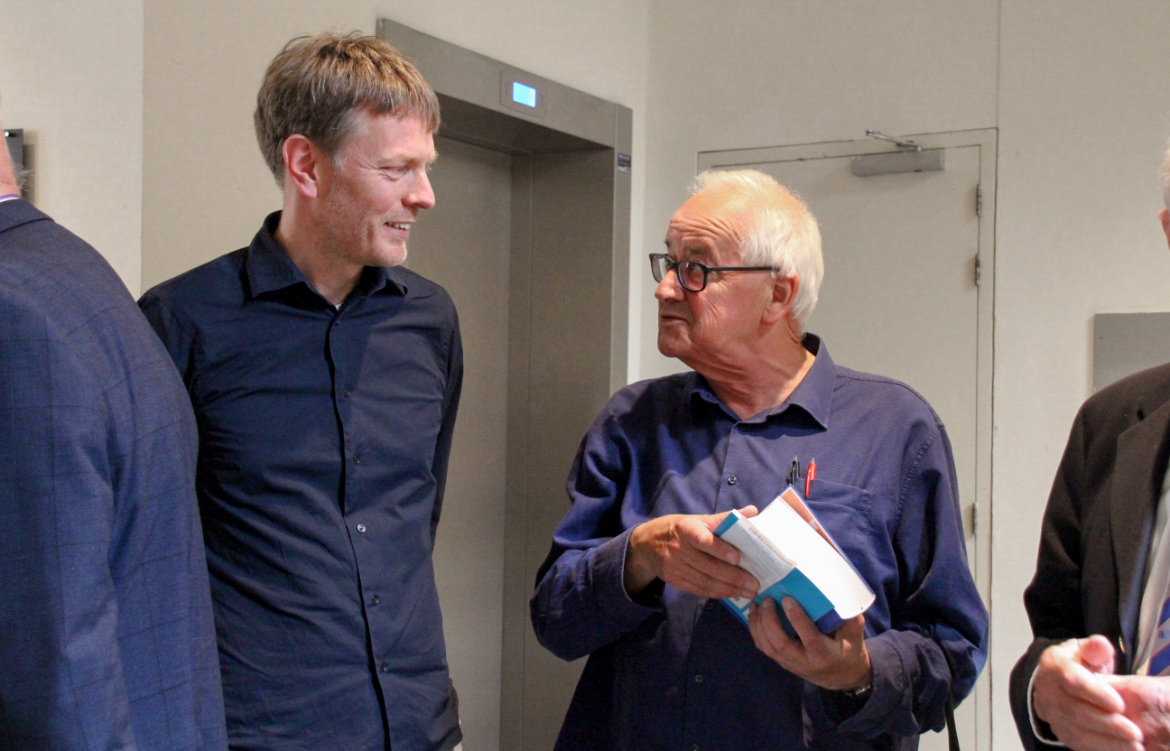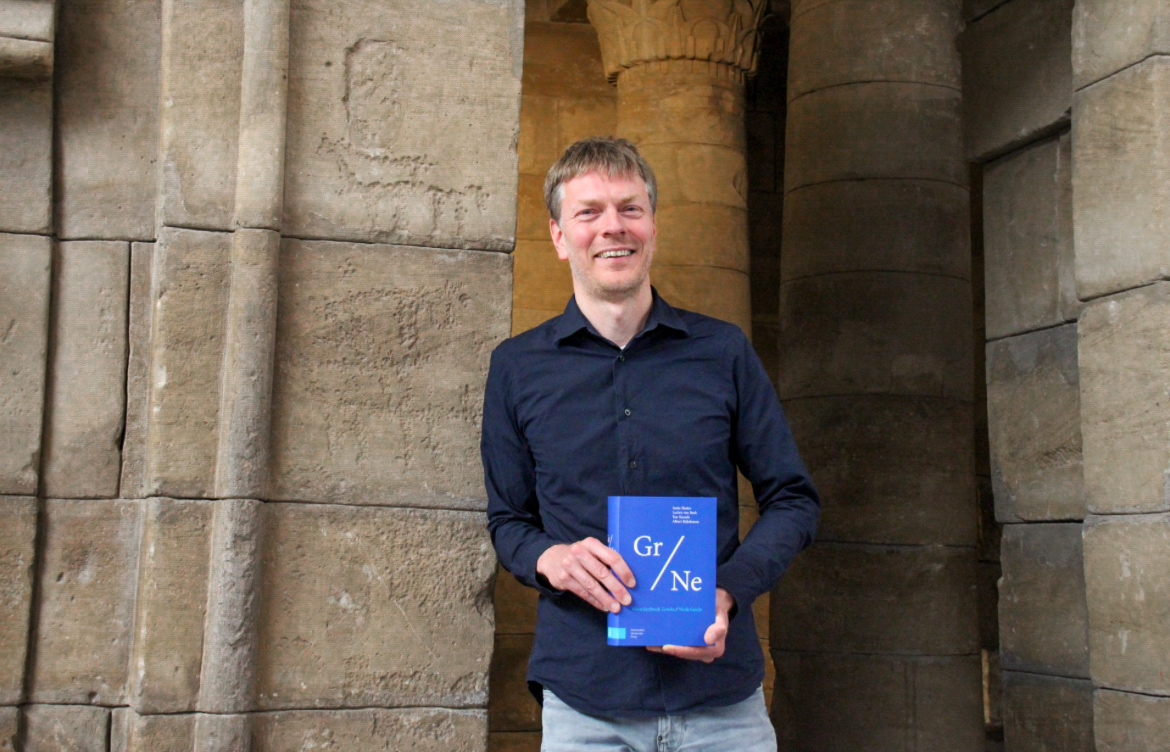
Presentation of Greek-Dutch dictionary: ‘In the end, you have to decide what to do’
After a process of more than two decades, the new Greek-Dutch dictionary was presented on Wednesday 5 June. University lecturer Lucien van Beek acted as manager of this project headed by Ineke Sluiter for the last nine years. He is also one of its editors-in-chief.
Around the beginning of the current century, a group of classics scholars led by Professor Ineke Sluiter identified the need for a new dictionary. ‘Initially, a recently published Greek-Italian dictionary was taken as the basis for determining the confines of the corpus,’ Van Beek comments, looking back on the start of the project. ‘That work was very exhaustive, so we could be confident that we would not miss any relevant Greek words or forms.’
To make the new dictionary attractive to secondary school students as well as undergraduates and graduate classics students, a broad corpus was chosen, but without too obscure authors or fragmentary texts. ‘The point is that people who want to read a text in the base language can find their way around,’ he said. Other important requirements were that the dictionary should start from modern linguistic insights, which was the specialism of the recently deceased emeritus Professor Albert Rijksbaron. Emeritus Professor Ton Kessels, in turn, worked to ensure that the Dutch of the translations was contemporary.
Book and website
In constructing the dictionary, use was also made of existing digital infrastructure, such as the Thesaurus Linguae Graecae, a database containing all ancient Greek literary texts. ‘That has been a huge help in searching within our corpus and in building the lemmas,’ Van Beek says. ‘We also looked a lot at the dictionary website Logeion, which has several Greek and Latin dictionaries in different languages online.’
‘But no matter how many resources you have, ultimately you yourself have to decide what to do,’ says Van Beek. ‘Once the corpus was established, we kept creating sets that would be about seven to eight pages in Word. These were sent to our lemma builders, who were then allowed to spend three days on the first version of such a set of words. Then, checks on morphology and etymology were made before a set went to the main editors.’
Even after thousands of years, this still yields surprising insights. ‘With the author Hesiod, who is just slightly younger than Homer, there is a folk etymology of the word “Cyclops” in which that name is interpreted as “one who has a round eye”, and hence “One-Eye”. That etymology is still assumed by most colleagues today, but I have a different theory: if you break up the word differently, you see that in an older linguistic phase it may have meant “cattle thief”. That fits very nicely with Homer's story, where the Cyclops Polyphemus has an almost pathological love for his sheep. So we included that interpretation in the dictionary.’
Dictionary and theory of form
Once the project was launched, it soon became clear that an online version of the dictionary would also be very welcome. ‘So an xml structure was set up and an interface was built with search and define functions,’ says Van Beek. The first letter was published online in 2012; now all letters are online and the full dictionary in print will follow. ‘Online, we have provided lots of citations to illustrate the contexts and constructions in which a word can be used,’ says Van Beek. ‘What noun case is used with it, for example? For the printed form, we kept most of the information about constructions, but omitted some of the quotations. In doing so, only quotations that appear in authors regularly used for the final exam were retained.’ Nevertheless, the result is more than 1,200 pages thick. Still, according to Van Beek, students don’t need to worry about having to lug this huge tome around. ‘The idea is that they initially look online when they look up a word,’ says Van Beek. ‘They can then use the printed work at home or at school during tests and exams.’
In doing so, students can also make use of the Morphology of Classical Greek, which Van Beek co-authored with Leiden alumnus Janric van Rookhuijzen and which will be published at the same time as the dictionary. ‘This 45-page reference work presents the lists of regular and irregular forms of Greek nouns and verbs. We tried to do that as succinctly as possible, but at the same time give a clear layout, with helpful tables, so that everything can be found easily. It really was a huge job to triple-check all the forms, but we are very happy with the result, both in terms of content and appearance!’
The new dictionary was presented at the National Museum of Antiquities on Wednesday 5 June. A presentation at bookstore Athenaeum in Amsterdam will follow on 2 July.

